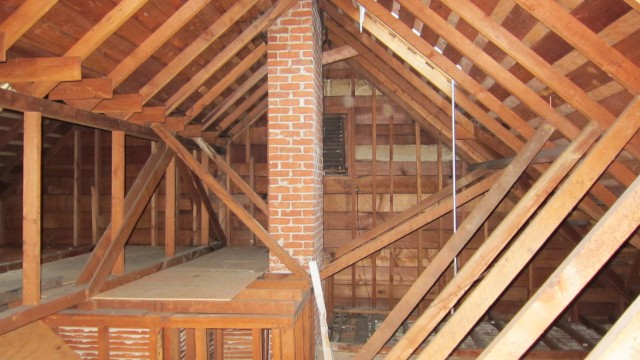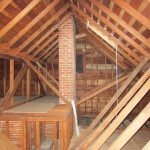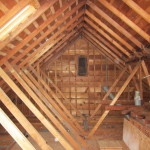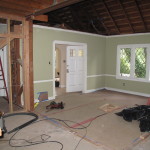
Attic Potential: How do you get up there?
Stairway to heaven
Deciding how to split up construction projects into smaller, more manageable and affordable bits can be challenging. A lot of planning needs to be done before ground is even broken. It is important to understand the big picture, or overall goals of the project. What ideally do you want to end up with? How does it look and feel? Will you need plumbing or mechanical systems? What are the structural implications? Flushing out all the ideas and deciding on a design, then creates a framework from which the project can be broken into phases. This doesn’t mean that the design won’t change down the road, a good designer can add flexibility and usability into a space for future use.
Our high volume attic with its 1920’s rough sawn lumber sold us our small two bedroom house. We immediately dreamed of some day building out the attic, but for now that would have to wait. During our first phase of construction we remodeled the main floor and bedroom level. We knew that we had to address anything in the living area that the future project would need because we wanted to be able to live in the house during the attic project. This included the stairs as well as the structural beams and posts, plumbing, electrical and heating all needed a path from the basement to the attic.
It took us a while to figure out where to put the stairs to the attic. Naturally, we could have left them where the prior owners had slapped them in or do what would be more of a natural flow off the entry and continue the circulation upward. We entertained two locations in our house; both emanated from the hall closet on the second floor of our split level house where the prior owners had installed a set of stairs not fully to code. One was into and over the kitchen along the bedroom wall, and the other was wrapping around our split level stairs back toward the entry. This latter idea became the focus one for design as well because it followed the existing stair path via an existing hall closet door. As we had re-configured the kitchen, we regained the space under the hall closet as an under-stair closet that is more of a coat closet rather then a linen closet.
We fixed the width of the existing roughed-in the stairs and kept the door, adding a deadbolt for security. No one, including our two toddlers really know that there are stairs to the attic when it is closed. We plan to open it up someday as a stairwell with nice daylighting and a connection to the attic; but for now it makes for a nice secret storage place. During construction, this will keep the dust and noise at a minimum while we complete another phase of the project.







